Culturing Ocean Science
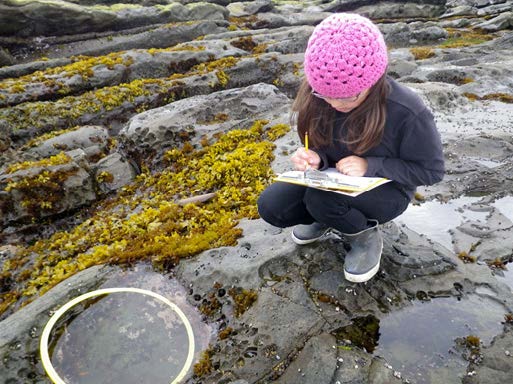
Courtesy K. Matsumoto/Seattle Aquarium
Integrating Traditional Ecological Knowledge and Western Science
Ocean Science, an award-winning partnership program of the Olympic Coast National Marine Sanctuary and Seattle Aquarium, brings ocean literacy to rural and Tribal communities on the outer coast of Washington State. Native people lived sustainably on the Olympic Peninsula for thousands of years through systems of practices and values that guided community sustainability and reinforced spiritual relationships with the environment. We work closely with many students who are members of peninsula tribes, so the integration of cultural traditions and ecological knowledge into an approach based on western science is critical to student learning, making it relevant to their daily lives.
Traditional ecological knowledge (TEK) can be defined as the evolving knowledge acquired by local peoples through direct contact with the environment over many generations. It is specific to place, emphasizes complex connections between people and the environment, and is centered on community values and sustainability. “When the tide is out, the table is set” is a common saying among people of the peninsula tribes. Marine resources are central to the culture and livelihood of the tribes. Native American communities represent between 12 and 98 percent of the students in peninsula school districts (Wray 2002), yet many of the schools’ curricula are not grounded in contexts that are relevant to issues affecting tribes today. The Ocean Science program serves students from the Makah, Quinault, Quileute, and Hoh tribes along the outer coast of Washington, where tribal resource managers implement modern scientific research and management practices. Students come into the program with a baseline of rich experiences and relationships to complex nearshore ecosystems, because many of their families have a direct connection to marine resources. They are fishermen, land and marine hunters, and subsistence gatherers, so our goal is to help students to understand western science practices while preserving traditional worldviews. We are at the beginning stages of implementing this integrated approach to marine science, and are moving forward to include this perspective in program activities and teacher workshops.
In the field component of the Ocean Science program, students conduct simple field investigations accompanied by tribal biologists on local beach field trips. We want to reinforce student connections to their local beaches, as well as having them explore their familiar environments in a new way through science inquiry and observation exercises. We work with teachers to use both native and western names for marine organisms, and to transmit traditional knowledge of the cultural significance of these organisms in their daily lives.
This kind of program development involves a long process of listening and learning from Tribal elders, community and cultural leaders, teachers, and students. Curricula are grounded in the specific cultural traditions of each community. We plan to include cultural teachers from each tribal school to join us on field trips and in classrooms, so we can connect Ocean Science curriculum with TEK. Through stories told by local elders we also examine population decline and other changes observed over time. Weaving these stories together with data based on scientific monitoring helps create vital connections, demonstrating how western science and traditional ecological knowledge can be integrated into marine conservation.
Ocean for Life
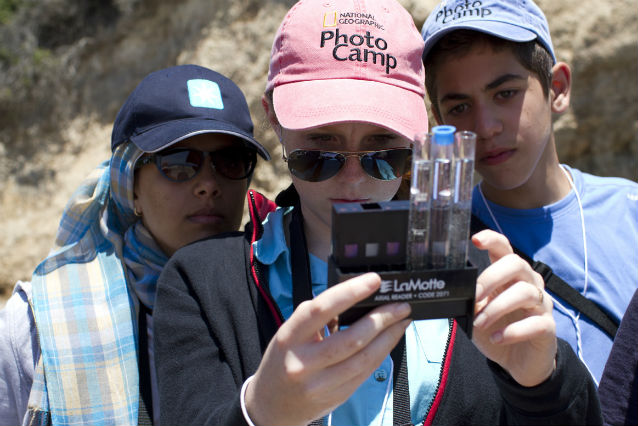
Courtesy J. Webb, National Geographic Media Camp
Ocean for Life is an international marine science and cultural exchange program created to inspire a more peaceful world, dawning from the tragic events of September 11, 2001. This vitally important program brings together students of diverse backgrounds to foster crosscultural relationships, explore marine science, and develop a stewardship ethic for the ocean.
Ocean for Life brings students to America’s national marine sanctuaries, where they discover how one ocean connects us all and how, by connecting to the ocean, we enrich our lives together. Ocean for Life is made possible through a partnership of U.S. government agencies and private entities. Since 2009, Ocean for Life has brought together approximately 100 high school students representing 16 countries in the Greater Middle East, Europe, Australia, Canada and locations throughout the United States. During each two-week field study, students document their experiences and express their revelations through a photography and video media camp. Following the field study, students are challenged to execute their Ocean for Life Action Plans to enhance cultural understanding and increase ocean awareness, conservation and stewardship at their schools and in their local communities.
Ocean for Life cultivates ocean advocates. Through their participation in the program, 100% of students said they gained knowledge of ocean conservation and stewardship, and 96% developed a better understanding of how their local actions impact the ocean, no matter where they live.
Student’s views regarding the global ocean and their connection to it changed as a result of the Ocean for Life program. Following the field study, 100% of the students stated they believe the health of the ocean and the actions of humans are interconnected, 96% agreed that choices made by their household can help improve the health of the ocean, and 100% now realize that we are connected to the ocean in many important ways.
Following the Ocean for Life field study, 96% of participants said they will try to learn what they can do to help solve environmental problems, which is an 10% increase from prior to the field study. As a result of the program, there was a 25% increase in the number of students who pledged to participate in coastal or ocean stewardship activities such as beach clean-ups and watershed restoration. Each and every Ocean for Life alumni has committed to changing their behavior for a better future.
Basmah Al-Mesad • Kuwait The Ocean for Life experience has taught me that no matter where we are from, we have a common language: the ocean. This experience taught me so much about the ocean and how our actions can affect the ocean. It has allowed me to connect with people my age from around the world.
Morgan Liston • United States Just as biodiversity is important to the ocean, cultural diversity is important to our Earth. We truly are one world, one ocean, one family, and we must act now.
Aya Toubar • Egypt The Ocean for Life program taught me lots of things, but the most important thing is how to live or act with each other because we are all friends living in one world, one ocean, without any difference.
A two-week immersive field study will be hosted by Channel Islands National Marine Sanctuary in Santa Barbara, California and on Santa Cruz Island from June 22-July 4, 2013. Thirty high school students will be immersed in ocean science activities focused on kelp forest ecosystems, marine life of the Santa Barbara Channel, sandy beach and rocky intertidal monitoring, watersheds, water quality monitoring, climate change, ocean acidification and much more.
Ocean for Life alumni are ambassadors of change. By sharing their experiences with others around the globe, they are laying the foundation for a safer, more tolerant society and a healthy, more sustainable world.
As we put aside our differences and work together to realize a better future, we learn another valuable lesson: When we take care of the ocean, we take care of each other.
Inspiring, Educating and Empowering our Next Generation
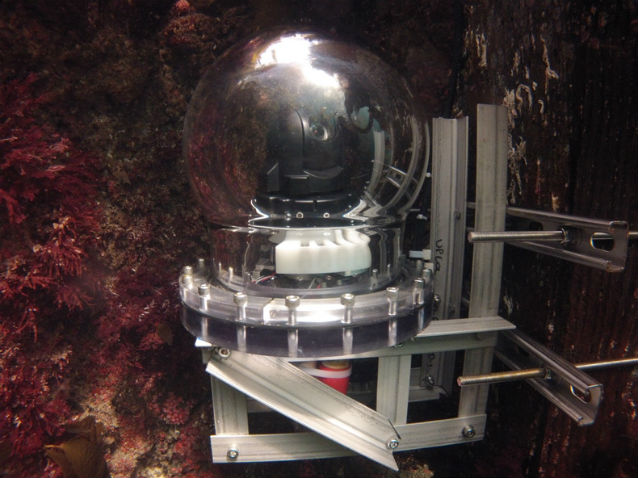
Their goal may not sound so simple: To influence scientists, private corporations, educators, policy makers, and the public to take an active stewardship role in appreciating, understanding, and valuing our most precious resource, our ocean. But even teens in the land locked state of Colorado where Teens4Oceans is based can see the effects we have on our aquatic ecosystems.
Over the last five decades, the global population has nearly doubled. This has placed unprecedented stress on natural ecosystems whose functionality is challenged worldwide. Our rivers, lakes, tributaries and watersheds are relied upon for our growing need for food and increased production. Near-shore coastal zones, the most productive parts of our ocean ecosystems, are compromised by overfishing and pollution. Global warming threatens every ecosystem that cannot adapt fast enough to the rapid change.
Young people are surprised to learn what future lies ahead for them in their world. But sometimes it isn’t easy keeping these minds and youthful voices passionate about something so far away. Or even engaging students from the seats of their classroom to a world so vast and out of reach to so many, economically and geographically.
Teens4Oceans is a nonprofit organization that works to empower our next generation to be ocean stewards through experiential education, research, innovative technologies and conservation. Inspired by ocean science and engineering, students stay involved in the design process, building, and deployment of webcams and various science nodes.
Each one of our webcams (shown in photograph) will be complemented with projects specific to the surrounding marine ecosystem so students can interact with the live video feeds, engage with other parties in our community and learn the basic values of citizen science involvement. We are honored to work with partners such as Channel Islands National Park, the Virgin Islands Environmental Resource Center, and Centro Ecologico Akumal in Mexico on projects.
We also work to involve student chapters in their local communities through our Teens-Take-Action Initiative program. We are currently working on a reusable water bottle initiative where students are actively campaigning and fundraising at their schools to educate students on the issues of plastic waste and to update their current water fountains with a water bottle refill add-on to reduce the use of plastic disposable bottles. If you are interested in joining our community and working with us on one of our projects, please visit http://teens4oceans.org/ and work with us to inspire, educate and empower our next generation.
A Virtual Visit to Remote Island and Ocean Environments
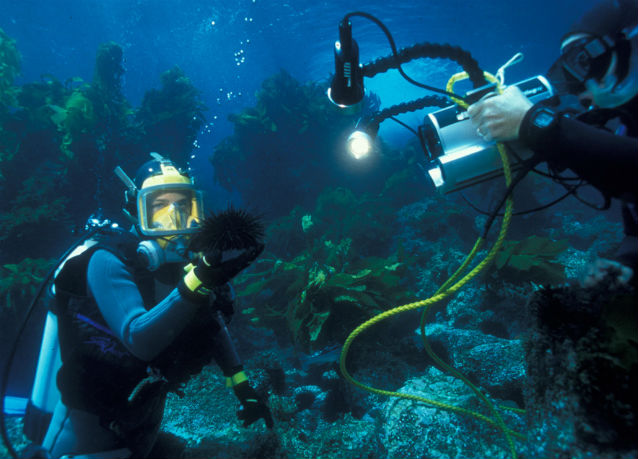
Remote, isolated, rugged, and sometimes inaccessible, Channel Islands National Park can be challenging to experience. Now, through advanced technology, Channel Islands Live brings the park to you.
This distance learning program, which is a partnership between the National Park Service and the Ventura County Office of Education, allows participants to join rangers as they dive through towering kelp forests and hike dramatic island trails.
Channel Islands Live includes interactive broadcasts where visitors can talk to the rangers and ask questions, curriculum-based presentations for schools, and webcams for monitoring island and underwater features. By bridging the channel through technology we are helping plant the seeds of understanding that can grow into the desire to preserve and protect this extraordinary place.
Programs are regularly broadcast interactively to the park visitor center in Ventura, California and into classrooms and other venues across the country. Viewers can also watch these programs live over the Internet. During the Live Dive program distant audiences get a rare glimpse of the kelp forest, one of the most diverse and prolific marine ecosystems in the world. In real time they speak to rangers diving underwater at a remote island to learn about current threats to our oceans and how they could help conserve our coastal and ocean resources.
Recent education programs reached hundreds of students in faraway states of New York, Wisconsin, Ohio, and Indiana. After experiencing the program a fourth grade student in Indiana commented, “I’ve never seen the ocean before—it is incredible!” While students are a primary audience, others have also been connected to the park by Channel Islands Live.
Viewers as diverse as a New York City stockbroker, a retiree in British Columbia, and intensive care surgeons in southern California, along with thousands of other virtual visitors from around the world, have experienced the recovery of bald eagles at Channel Islands by watching breeding pairs and young eaglets via live webcams.
In one incident their enthusiasm turned to anxiety when the young eaglets were unexpectedly attacked by a sub-adult bald eagle. Essential to the eaglets rescue was an avid webcam watcher from a law office in Long Island, New York, who alerted biologists on the island. Within days footage of the eagle attack drew wide attention as a “most watched” clip on YouTube for the next few weeks. Through this technology diverse people from distant places link to a tale of restoration in a national park.
The isolation of the Channel Island naturally limits the number able to visit this pristine national park. Channel Islands Live is an innovative program that provides a new way to experience the wild and remote reaches of the park using wireless technology—a way to bring the park to the people, wherever they may be.
A Creative Approach to Long-term Monitoring
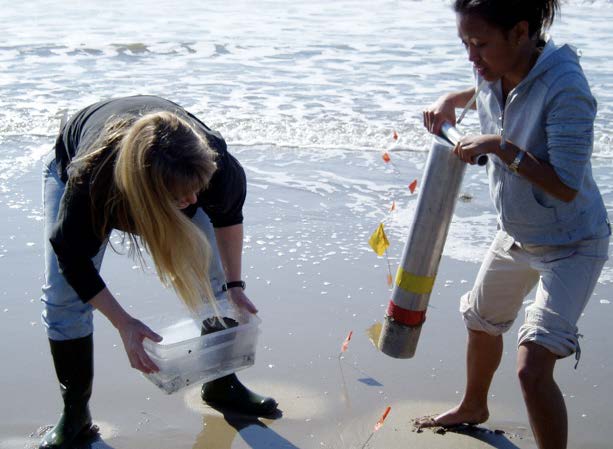
Courtesy C. Rodriguez
LiMPETS (Long-term Monitoring Program and Experiential Training for Students) is an environmental monitoring and education program for students, educators, and volunteer groups. This hands on program was developed to monitor the coastal ecosystems of California’s National Marine Sanctuaries to increase awareness and stewardship of these important areas. Approximately 4,000 teachers and students are involved with the collection of data. Two distinct monitoring programs make up the core of the network: the Rocky Intertidal Monitoring Program and the Sandy Beach Monitoring Program. Both programs were designed to provide students with the opportunity to experience the scientific process firsthand. From the Channel Islands to the Gulf of Farallones and beyond, students are using the same LiMPETS protocols to monitor their local intertidal areas.
The LiMPETS network was created in 2002 to streamline the West Coast National Marine Sanctuaries intertidal student monitoring programs. Student-friendly protocols for monitoring rocky intertidal and sandy beach ecosystems were developed with the expertise of Dr. John Pearse, Dr. Jennifer Salzman, and many others. The LiMPETS network is a collaborative effort among California’s National Marine Sanctuaries, Farallones Marine Sanctuary Association, University of California Santa Barbara Marine Science Institute, and the Pacific Grove Museum of Natural History.
Long-term monitoring provides valuable information to evaluate the health of California’s intertidal systems. The intertidal habitats along the west coast of the United States are among the most diverse and productive of any region in the world. Despite their ecological significance and protected status, these habitats are increasingly impacted by human activities (directly by harvesting and trampling, indirectly through oil spills, pollution and litter). In addition, there are dramatic geologic and climatic disruptions that could impact the balance of life along our shores. By monitoring, we establish a baseline from which we can better address current and future impacts.
Beyond the educational value of the LiMPETS program, the power of the LiMPETS network lies in the large quantity of data that is being collected at more than 60 sites and over 600 miles of coastline. LiMPETS teachers and students go through rigorous training, and they are able to collect a large amount of data, cheaply. Annually, thousands of students and citizens compile baseline data against which future observations will be compared. By monitoring, students become the eyes and ears for our coastal beaches and rocky shores, detecting changes and possible problems, often before anyone else. Most notably, LiMPETS data are being used to help establish a baseline of key indicator species for the new system of California Marine Protected Areas (MPAs).
Citizen science monitoring programs, like the LiMPETS network, connect students to the ocean, involve them directly in a real scientific endeavor, and increase their awareness of, and interest in, the marine environment. Our goal is to create a new generation of informed and engaged ocean stewards. Join us—learn the process of science and help to protect our local marine ecosystems. Visit the LiMPET site to learn more.
Contributors
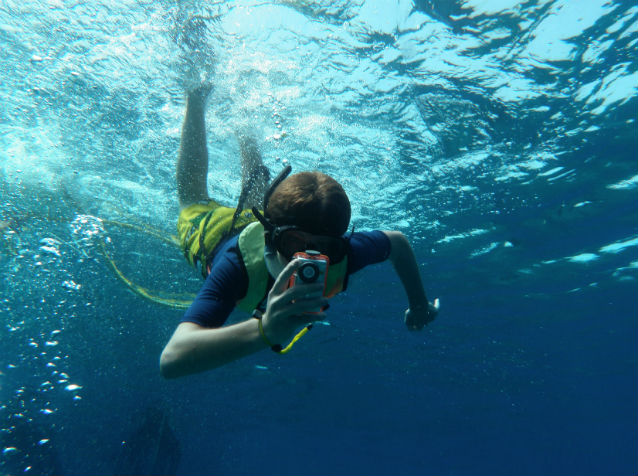
Courtesy N. Lemoine, France, Ocean for life 2009
David Begun, Channel Islands National Park
Julie Bursek, Channel Islands National Marine Sanctuary
Amy Dean, Farallones Marine Sanctuary Association
Claire Fackler, NOAA Office of National Marine Sanctuaries
Kat Massey, Teens4Oceans
Karen Matsumoto, Seattle Aquarium
Yvonne Menard, Channel Islands National Park
Editor:
John Dell’Osso, Point Reyes National Seashore
Part of a series of articles titled Pacific Ocean Education Team (POET) Newsletters.
Previous: POET Newsletter March 2013
Tags
- channel islands national park
- pacific ocean
- pacific ocean education team
- education
- students
- ocean for life
- channel islands
- ocean science
- teens4oceans
- limpets
- long-term monitoring program and experiential training for students
- marine protected areas
- mpas
- seattle aquarium
- farallones marine sanctuary association
Last updated: October 8, 2021
